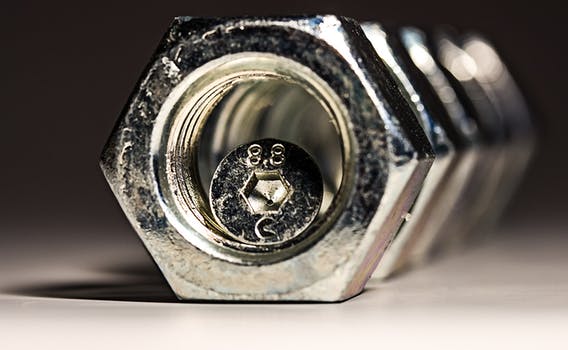
The Miracle Metal: Aluminum
You don’t have to look far to find an aluminum supplier in the Philippines. In fact, you might have quite a few within your vicinity. You’d be surprised at the sheer amount of aluminum you’re using in your everyday life. You might be using it now as you’re reading this article. Aluminum can be found everywhere and we mean everywhere. It’s in your car, your phone, your computer, your cooking utensils, your food, and even your home’s windows. Aluminum is indeed everywhere – even in the places we don’t know about.
We have an almost infinite supply of aluminum as it makes up 8.1% of the Earth’s crust. This makes it the most abundant metal and the 3rd most abundant element in the crust, and the reason it can be found everywhere and is in virtually everything we use. Due to its abundance and many uses, aluminum has been given the title “miracle metal.”
Miracle metal – such a grand title for simple material. Well, aluminum isn’t as simple an element as we think. For one, aluminum can only be found in chemical compounds along with elements like oxygen, silicon, and sulfur. So, despite being the most abundant metal, it is impossible to find aluminum naturally in its purest form.
Another reason for this title is because of its unique properties that trumps most other of metals. It is also because of these properties that aluminum has such a wide range of applications. These are things your local aluminum supplier in the Philippines won’t be able to tell you, so we’ll do it in their stead.
In the following part, we will discuss everything there is about aluminum starting from a brief history to its many uses in our life. If you stick around, you’ll be more knowledgeable about aluminum than your aluminum supplier in the Philippines!

Brief History of Aluminum
The use of aluminum dates back to 5000 B.C. when Persian potters used clay that contained aluminum oxide to make their strongest vessels. It was also used by Ancient Egyptians and Babylonians for their cosmetics, fabric dyes, and medicine. These civilizations, however, were using aluminum compound and not pure aluminum metal.
It wasn’t until– making it one of the newest metals to be discovered. It took centuries for this to happen because of the difficulty of separating aluminum from its natural compounds.
One interesting fact about aluminum is that it was born out of science. Since it can’t be found naturally, scientists, chemists, and similar experts had to go through difficult lengths to bring it to life. They had to purify bauxite, an ore that can be commonly found in the topsoil of tropical and subtropical regions. The technology and research to achieve this wasn’t available until the 19th century. It was only after the advancement of science that aluminum was isolated as a pure metal and identified as an element on its own.
The first person to ever obtain pure aluminum was Danish physicist and chemist Hans Christian Ørsted in 1827. Unfortunately, what he thought was pure aluminum was actually just an aluminum alloy. It really wasn’t until 1856 that the first industrial aluminum was ever produced. However, the whole process to create aluminum was difficult and labor intensive, not to mention expensive, so it was considered an elite material. Back then, it had the same value as silver and was only intended for luxury items, ornaments, and jewelry.
The smelting process that finally allowed for the economical mass production of aluminum is called the Hall- Héroult process. It was discovered by American chemist Charles Martin Hall and French scientist Paul Héroult. By simply looking at this, you’d think that both Hall and Héroult were working together, but they actually weren’t. They independently discovered the same process almost simultaneously and applied their patents in 1886. The world’s newspapers quickly labeled them “the aluminum twins” for this extraordinary coincidence.
A short 3 years after Hall and Héroult’s discovery, in 1889, an Austrian chemist named Carl Josef Bayer invented a cheap and feasible method of producing alumna. The introduction of the Bayer process allowed manufacturers to abandon costly and less efficient methods such as the Le Chatelier process and the Deville process.
However, the Hall- Héroult process still stood its ground and together with the Bayer process became the backbone of all aluminum production processes until this very day. So, from being one of the rarest and most priced metals, aluminum has become one of the most affordable and useful metal available.

Properties of Aluminum
Now that we’ve gone over its history, it’s high time we discuss the properties that truly make aluminum the “miracle metal.” And we can bet that your aluminum supplier in the Philippines will agree to many of these.
• Lightweight – Aluminum weighs a third of what iron, steel, copper, and brass usually does. It has a density of 2700 kg/m3 as opposed to steel that has a density of 7800 kg/m3. Due it being lightweight, it reduces shipping and handling costs hence replacing most materials in several industries.
• Strong – Just because it’s light, doesn’t mean it has no strength. One of the best things about aluminum is that it’s strength can be easily adjusted to match any product’s needs. Its strength can vary anywhere between 70MPa and 700MPa.
• High Strength-To-Weight Ratio – In terms of strength-to-weight ratio, aluminum trumps all other materials. This specific property makes it a popular material in the modern aerospace and transportation industry.
• Resilient – Aluminum products have been known to behave elastically under both dynamic and static conditions. What this means is that they are able to resume their shape and size under most conditions. Resiliency is a good property for a metal to have especially when flexible strength is required from a product like in the masts and spars of racing yachts.
• Ductile at Low Temperatures – Some metals have brittle fracture problems, which means that their strength and quality decreases as temperatures are lowered. This, however, does not occur with aluminum. On the contrary, aluminum alloys increase in strength as the temperatures lowers, making them ideal for low-temperature applications. Examples of this low temperature applications are in cryogenics, LNG tankers, and LNG storage tanks. There was also a moon buggy made of aluminum that withstood the deep cold of outer space.
• Corrosion Resistant – Unlike most metals that are prone to rust and corrosion, aluminum, when exposed to air, forms an oxidized film on its surface. The formation of this film protects it from corrosion. Even when it’s scratched, the layer reforms rapidly to retain protection. This property is best utilized in buildings and household utensils.
• Heat Conducting – Heat-conductive materials are commonly used in chemical, petroleum, aircraft, automotive, and food industries, and aluminum is one of the best available. It is able to conduct heat better than most common metals and is three times as conductive a steel.
• Electrically Conducting – Aside from being a good conductor of heat, aluminum is also to conduct electricity well. We all know that copper is one of the best materials when it comes to conducting electricity, but aluminum even has that beat. Even though it only has 63% percent of copper’s conductivity, it achieves this while weighing 1/3rd less than copper. What this ultimately means is that aluminum can conduct twice as much electricity as copper when at the same weight. There’s a reason it’s used in bases of electric bulbs, power transmission cables, and other electric fields.
• Reflective – Aluminum is an ideal insulating material in buildings because of its reflective surface. At best, it can reflect more than 80% of radiant energy like visible light, radiation, and electric waves. And the purer the product, the more reflective it is.
• Non-Toxic – It’s not rare to see beverage cans, cooking utensils, food packaging, and other food-related products made from aluminum. It remains a popular material in this field because it is non-toxic and odorless. It also has a smooth and hygienic surface that germs can’t grow onto.
• Non-Magnetic – Another reason aluminum is widely used in electrical and electronic applications is that of its non-magnetic property. Because of this property along with many others, it can be used for bus bars, magnetic compasses, computer disks, parabolic antennas, and more.
• Non-Sparking – Against itself and other non-ferrous metals, aluminum is a non-sparking material, which makes it an essential material in products that are used with explosive and flammable substances and atmospheres. Petrol pump nozzles are an example of this.
• Non-Combustible – Aluminum does not burn nor does it generate hazardous emissions when exposed to heat. This property makes it the perfect material for buildings and vehicle where a fire is a potential hazard.

Product Advantages of Aluminum
After enumerating the many properties of aluminum and how it fares against other metals, we will move on to the different advantages aluminum has when used in the production of different products.
• Aesthetically Pleasing – Aluminum’s natural metallic surface is aesthetically pleasing and does not require further finishing. In cases where a product needs additional protection, anodizing can be used to thicken its natural oxide film. This process will not affect the metal’s appearance and will allow it to retain its natural, aesthetically-pleasing surface.
• Wide Range of Finishes – Although aluminum already has an attractive surface, some products do call for a different finish and appearance. When it comes to applying finishes and altering its appearance, aluminum is very flexible. It can be coated with paint, enamel, lacquer, enamel, and more. Its texture can also be changed to different varieties like rough, matte, or mirror smooth.
• Produces Seamless Products – The use of aluminum often results in visually and functionally seamless one-piece products. This means that there are no mechanically joined seams that will ruin appearance or cause leaks whether in aluminum tubes or hollow shapes.
• Excellent Machinability – Manufacturing companies won’t have a hard time handling aluminum because of its excellent machinability. It can be shaped and treated in various methods such as milling, drilling, cutting, bending, punching, and more. Additionally, the energy needed to handle aluminum is low which means leads to a greener environmental footprint.
• Superior Malleability – In addition to its excellent machinability, aluminum also has superior malleability. It can be fabricated into various different forms like sheets, rods, tubes, and wires with very little effort.
• Easy Joining Methods – Making a product made of aluminum and other metals won’t prove to be difficult because aluminum can be easily joined to other materials. All major methods can be used to fuse it to different metals including welding, soldering, bolting, brazing, clipping, adhesive bonding, snap together, and many more.
• Recyclable – Perhaps the best thing about aluminum products is the fact that they last forever and are environmentally friendly. In fact, the aluminum industry has a large “secondary metal” sector that accepts remelts and recovers metal from scrapped aluminum products. Moreover, recycling aluminum only takes 5% of the energy needed to produce it.

Uses of Aluminum
The many product advantages of aluminum make it one of the best materials to ever exist. And we encounter it in our everyday lives for the same reason. As said earlier, aluminum is everywhere – that’s not a hyperbole and we’ll prove it. Here is a list of the top uses of aluminum in this section:
• Transportation
We’ve already mentioned that aluminum’s strength-to-weight ratio is second to none and this is what makes it the perfect material for the transportation industry. Due to its lightweight property, less force is required to move any vehicle which leads to better fuel efficiency. Although it’s not the strongest metal, it can easily be fused with other metals to make a strong alloy. Additionally, its resistance to corrosion eliminates the need for expensive and heavy anti-corrosion coatings.
To this day, the auto industry still heavily depends on steel but all this is about to change. It is being predicted that the aluminum content in cars will increase by 60% by the year 2025.
Aside from being the ideal material for cars, it is also widely used in high-speed rail systems like Japan’s Shinkansen and Shanghai’s Maglev. Again, it’s lightweight property play a huge factor in this and allows designers to cut down friction resistance.
Aluminum is also used widely in the creation of aircrafts and is often called the “winged metal” because of this. It’s such a popular and ideal material because of it is light, strong, and flexible. Aluminum alloys are used throughout most modern aircrafts, from the cockpit instruments to the fuselage. Even space shuttles contain at least 50% to 90% of aluminum alloys.
• Construction
The first building to ever make wide use of aluminum is New York’s Empire State Building. It was erected in 1931 and still stands tall to this very day. Aluminum started to replace steel when it comes to construction because it is virtually maintenance free and thermally efficient.
You can even add to this the fact that it has an aesthetically-pleasing finish and high machinability. Additionally, due to its lightweight, it doesn’t require deep foundations which usually drive up construction costs.
• Electrical Field
It has been said that aluminum is a great conductor of electricity and that it almost has copper beat in terms of conductivity. True enough that it only has 63% of copper’s conductivity but its low density more than makes up for the remaining 37%.
When you put these two properties together, it makes the best material for long distance power lines. If copper was used in these power lines, support structure would have to be heavier and numerous which leads to higher expenses. Not to mention that aluminum is more ductile and can be easily formed into wires.
• Consumer Goods
One of the main reasons aluminum is frequently used in consumer goods like smartphones, laptops, tablets, and TVs is its appearance. It offers the perfect balance between form and function. It also stronger, tougher, and lighter than the usual steel and plastic materials. In addition, its ability to conduct and dissipate heat prevents these electronic devices from overheating.
Furniture made from aluminums is are also a hit with interior designers because they look great and are easy to shape. As for your pots, pans, and food products, their made of aluminum because the material is non-toxic, corrosion and rust resistant, easy to clean, and, again, a good conductor of heat.
When you walk into inside the shop of your aluminum supplier in the Philippines, don’t be shocked by the piles of products you’ll see. Aluminum is literally everywhere and you’d only be surprised to find what other items are made from it.
Why Choose One Sky’s Aluminum Products?
That’s all the proof there is as to why aluminum is the “miracle metal,” but this begs yet another question of which aluminum supplier in the Philippines should you trust. If aluminum is as amazing as we say, then practically anything made from it is sure to be worth the money.
Well, not quite. There are still ways to improve aluminum and several other ways for it to diminish. Suppliers and manufacturers handle the material differently and end-products aren’t always of the same quality.
That being said, if you’re looking for an effective and reliable supplier of aluminum in the Philippines, especially when it comes to stainless steel, and aluminum windows, trust One Sky! They’re a pioneer in the industry and have cemented their presence in the market ever since they were established in 2011. This feat of gaining product dominance in such a short period of time has never been done by any other aluminum supplier in the Philippines.
Their unwavering dedication in providing their clientele with top-quality aluminum products is also huge part of their success. They continue to thrive steadfast with their vision of “Setting Higher Standards for Philippine Aluminum.” You are sure to get your money’s worth and satisfy your aluminum needs if you put your trust in One Sky!